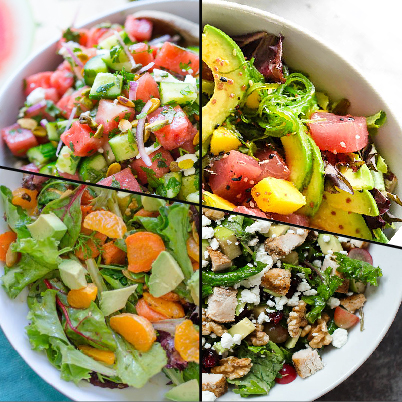If you're someone who invests in a strict (and expensive) skin care regimen that requires a great deal of upkeep, you may want to make sure your diet is compliant. One thing to nix is milk -- particularly skim. "Cow's milk in general has been linked to worsening of acne, but the greatest association is with skim milk," says Joshua Zeichner, M.D., director of cosmetic and clinical research at Mount Sinai Hospital in New York City. In fact, one study, published in the Journal of the American Academy of Dermatology, supports this correlation. Researchers found a link between those who drank skim or low-fat milk and acne, but did not find the same for those who drank full-fat milk.
Dr. Zeichner notes that another theory as to why cow's milk may cause breakouts is that hormones from the lactating cow may be transferred to the milk and ultimately stimulate our oil glands when we drink it. "Sugar has also been associated both with premature skin aging and acne breakouts," he explains. "High sugar levels in the blood promote inflammation that cause acne flares in predisposed individuals."
Additionally, he explains that high sugar levels leads to a process called glycation, where the sugar attaches to collagen leading to hardening of the collagen itself and early wrinkling. "While I know I shouldn't be having too much sugar, I have to admit it's difficult to resist taking a lick of my kids' ice cream cones."
Image via Getty
Dr. Zeichner notes that another theory as to why cow's milk may cause breakouts is that hormones from the lactating cow may be transferred to the milk and ultimately stimulate our oil glands when we drink it. "Sugar has also been associated both with premature skin aging and acne breakouts," he explains. "High sugar levels in the blood promote inflammation that cause acne flares in predisposed individuals."
Additionally, he explains that high sugar levels leads to a process called glycation, where the sugar attaches to collagen leading to hardening of the collagen itself and early wrinkling. "While I know I shouldn't be having too much sugar, I have to admit it's difficult to resist taking a lick of my kids' ice cream cones."
Image via Getty
These quick and easy breakfasts might pack a flavor punch, but they're sorely lacking in nutrition and are overloaded with calories to boot. In fact, one measly Pop-Tart can cost you around 200 calories, depending on your choice of filling (and who stops at just one?). Additionally, the standard Pop-Tart contains around 28 grams of carbs and only 2 grams of protein, so they're guaranteed to leave you hungry in a matter of an hour. "Foods containing way more carbs than protein tend to be digested more quickly, elevate insulin and blood sugar levels quickly, and leave you hungrier than foods that have a bit more balance with carbs and protein," says Roger Adams. Ph.D., Houston-based dietitian and nutritionist and founder of eatrightfitness.com. "This can lead to overeating, as you try to compensate for the speed at which these types of food digest."
A better quick choice in the morning, one that will leave you more satisfied and is equally as quick, is a simple fold-over peanut butter sandwich with raisins or apple slices added to it. "This gives you a much better balance of carbs, fats, and protein, healthy fats, fiber (if you use whole-grain bread and don't peel the apple)," says Dr. Adams. "Just go easy on the peanut butter, as it is calorie-dense -- one to two teaspoons should keep you fueled well into the morning and prevent mindless work snacking!"
Image via Getty
A better quick choice in the morning, one that will leave you more satisfied and is equally as quick, is a simple fold-over peanut butter sandwich with raisins or apple slices added to it. "This gives you a much better balance of carbs, fats, and protein, healthy fats, fiber (if you use whole-grain bread and don't peel the apple)," says Dr. Adams. "Just go easy on the peanut butter, as it is calorie-dense -- one to two teaspoons should keep you fueled well into the morning and prevent mindless work snacking!"
Image via Getty
If you've seen the popular documentary Super Size Me, you're probably familiar with the laundry list of reasons why fast food, a la McDonald's and Burger King, is bad for your health. One 2012 study by the University of Calgary even found that the effects of eating high-fat, or fast, foods is apparent in as little as a few hours.
Blood pressure levels also spike after eating a high fat-meal. "Fast foods are packed with sodium, which affects water retention, and increases blood pressure and heart rate, putting a lot of stress on the heart," says Sherry Ross, M.D., OB/GYN and women's health expert at Providence Saint John's Health Center in Santa Monica, California. "Highly salty foods start to negatively affect the healthy functioning of blood vessels within 30 minutes."
Instead, Dr. Ross recommends making fresh, low-fat meats, chicken and fish your top choices of protein for healthy calories. "The best 'value' in a fast food meal is removing it completely from your diet."
Image via Getty
Blood pressure levels also spike after eating a high fat-meal. "Fast foods are packed with sodium, which affects water retention, and increases blood pressure and heart rate, putting a lot of stress on the heart," says Sherry Ross, M.D., OB/GYN and women's health expert at Providence Saint John's Health Center in Santa Monica, California. "Highly salty foods start to negatively affect the healthy functioning of blood vessels within 30 minutes."
Instead, Dr. Ross recommends making fresh, low-fat meats, chicken and fish your top choices of protein for healthy calories. "The best 'value' in a fast food meal is removing it completely from your diet."
Image via Getty
Most commonly referred to as Magic Shell, this sweet, crunchy, chocolate-y goodness that you once enjoyed as a child is much worse for you than you probably realized (which is why your mom only allowed it on special occasions).
In a nutshell, these dessert toppings are superhigh in saturated fat. And while current research shows a little saturated fat isn't all that bad for you, the two-teaspoon serving recommendation for most hardenable dessert toppings is over the top, with 7 grams of saturated fat (37 percent of your daily recommended intake). To put that number in perspective, an 85 percent lean, 3-ounce ground beef patty has only 5 grams of saturated fat, which is 25 percent of your daily recommended intake. "While saturated fats aren't quite the evil dietary villain they were just a few years ago, it's always a good idea to replace them with healthier, mono- or poly-unsaturated fats, when possible," says Dr. Adams. "Too much saturated fat has been linked to increased levels of LDL (bad) cholesterol."
Instead, Dr. Adams recommends opting for fresh fruit instead. "It is much lower in calories -- half a cup is around 60 versus the two tablespoons of dessert topping at a whopping 210," he says. "Even making your own topping with a little bit of melted peanut butter and a touch of honey is a great choice -- and the peanut butter gives you a good dose of healthier fat!"
Image via Foodrepublic.com
In a nutshell, these dessert toppings are superhigh in saturated fat. And while current research shows a little saturated fat isn't all that bad for you, the two-teaspoon serving recommendation for most hardenable dessert toppings is over the top, with 7 grams of saturated fat (37 percent of your daily recommended intake). To put that number in perspective, an 85 percent lean, 3-ounce ground beef patty has only 5 grams of saturated fat, which is 25 percent of your daily recommended intake. "While saturated fats aren't quite the evil dietary villain they were just a few years ago, it's always a good idea to replace them with healthier, mono- or poly-unsaturated fats, when possible," says Dr. Adams. "Too much saturated fat has been linked to increased levels of LDL (bad) cholesterol."
Instead, Dr. Adams recommends opting for fresh fruit instead. "It is much lower in calories -- half a cup is around 60 versus the two tablespoons of dessert topping at a whopping 210," he says. "Even making your own topping with a little bit of melted peanut butter and a touch of honey is a great choice -- and the peanut butter gives you a good dose of healthier fat!"
Image via Foodrepublic.com
In case you don't know the technical difference between margarine and butter, here's your two-second lesson: Butter is made from milk or cream, while margarine is non-dairy and often made from plant-based fats. It's often preferred over real butter because it's lower in saturated fats and it spreads more easily, but Rebekah Blakely, R.D., dietitian for The Vitamin Shoppe, explains that there's more to margarine than meets the eye. "Margarine is essentially a lab-created food, with around 10-12 ingredients versus butter's three," she says. "Additionally, margarine has traditionally been made with trans fats (ingredient: partially hydrogenated oils) which are detrimental for heart health and worse than the saturated fats they replaced."
The good news is that the FDA has ordered all trans fats be removed from our food supply by 2018, so manufacturers are already beginning to replace it with other alternatives, like palm oil. However, most margarines are also made of vegetable oils high in omega-6, which, Blakely notes, the typical American already gets way too much of in their diet. "When we don't balance out our omega-6 intake with omega-3s (like salmon, sardines, chia, flax), we can have increased inflammation in our body," she says.
Instead of margarine, she recommends using small amounts of real, grass-fed butter instead of margarine and planning for the majority of your fat intake to come from healthy plant sources like olive oil, avocados, nuts, and seeds.
Image via Getty
The good news is that the FDA has ordered all trans fats be removed from our food supply by 2018, so manufacturers are already beginning to replace it with other alternatives, like palm oil. However, most margarines are also made of vegetable oils high in omega-6, which, Blakely notes, the typical American already gets way too much of in their diet. "When we don't balance out our omega-6 intake with omega-3s (like salmon, sardines, chia, flax), we can have increased inflammation in our body," she says.
Instead of margarine, she recommends using small amounts of real, grass-fed butter instead of margarine and planning for the majority of your fat intake to come from healthy plant sources like olive oil, avocados, nuts, and seeds.
Image via Getty





